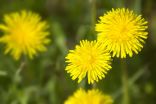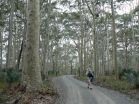(Press-News.org) Halle (Saale). The role of plant traits might be overestimated by biologists in studies on plant invasiveness. Anthropogenic factors such as whether the spcies was being cultivated proved to be more important. These conclusions were made from a study on Central European plants that were introduced by humans to North America and over time became naturalised in this continent. Naturalisation of new plant species, a process that makes it a permanent member of the local flora, most strongly depends on residence time in the invaded range and the number of habitats occupied by species in their native range, researchers reported in the journal Ecology. The study was jointly conducted by scientists from The Czech Academy of Sciences of the Czech Republic (AV ?R) and the Helmholtz Centre for Environmental Research (UFZ) and also involved scientists from the Charles University in Prague, Martin-Luther-University Halle-Wittenberg, the German Centre for Integrative Biodiversity Research (iDiv) Halle-Jena-Leipzig, Masaryk University in Brno, Biota of North America Program, North Carolina and other institutions.
Invasive species that spread widely in their invaded range can not only have detrimental impacts on ecosystems and threaten biodiversity but may also cause massive economic damage in agriculture and forestry. Once a species has already been naturalised, it can often no longer be fully controlled - even after considerable efforts. Since the 1980s biologists have been looking into ways of predicting which species show invasive behaviour and which species do not - a complex and multi-facetted problem. One thing that remains certain, however, is that the majority of alien species have become naturalised in their new home range with the help of humans.
Over the course of history many species arrived in other parts of the world with the Europeans - and North America is no exception. Intensive trade between the two continents in the last five hundred years has led to one of the largest processes of species exchange. Since this propagation route has been symptomatic for the spread of many species across continents, scientists have investigated this process more closely in an attempt to find out what makes certain species successful. For this they used the most comprehensive database available so far that provides information on central European plant species found in North America. A comparison was made between the flora of the Czech Republic (representative of plant species found in Central Europe) and the most comprehensive database on vascular plants of North America. It was found that out of 1218 species of seed plants from Central Europe, 466 taxa had already become naturalised in North America and had formed populations that persist on their own in the wild. The comprehensive information from the database enabled the scientists to compare and analyse numerous traits such as plant height, number of seeds or methods of pollination with their geographic distribution.
In order to analyse this volume of information, the team developed a model that describes the invasion process of Central European plant species in the USA and Canada in terms of different drivers, showing just how efficient certain factors are as drivers of invasion. Purely biological traits such as specific leaf area, plant height or seed persistence played a much less significant role compared to geographic or anthropogenic factors. For example, the residence time of a species in its invaded range, i.e., the time since introduction of that species, accounts for a 20 times higher risk of invasion compared to one of the important biological traits, which was the ability of seed to persist in soil for several years in a viable state. Whether or not the species had been cultivated in its native or new region also played a major role. „Our results clearly indicate the overwhelming role of these factors in determining invasion, with the residence time having about three times as strong an effect as the propagule pressure resulting from the cultivation in the invaded range", explains Prof. Petr Pyšek from the Institute of Botany of The Czech Academy of Sciences.
That the cultivation of plants by humans plays a major role in these processes is further illustrated by the fact that only six percent of the plants analysed in this study had never been cultivated during the process of their naturalisation. This confirms that the vast majority of invasive plant species had previously been associated with humans in one way or another. „These new results from North America confirm the results that were reported for Europe two years ago: socioeconomic factors and thus the influence of humans have a stronger influence on invasion processes than the biological traits of species", emphasizes Prof. Dr. Ingolf Kühn from the UFZ in Halle (Saale). Furthermore, "generalists" (species that are less sensitive to environmental factors with the ability to reproduce quickly) do not only occur more frequently than invasive species, but are also cultivated more often than "specialists".
„One of our most important messages is therefore that studies on invasive species, which do not take into account the characteristics of the native range or residence time in the invaded range, may seriously overestimate the role of biological traits", states Ingolf Kühn. Spurious predictions of plant invasiveness could then be the consequence. Studies such as the one at hand therefore contribute to making better assessments of future risks, since the factors mentioned here can also be applied to those species that have not yet made their way to regions outside their distribution and may therefore represent potential problems in the future.
INFORMATION:
Publication:
Pyšek, P., Manceur, A.M., Alba, C., McGregor, K.F., Pergl, J., Štajerová, K., Chytrý, M., Danihelka, J., Kartesz, J., Klimešová, J., Lučanová, M., Moravcová, L., Nishino, M., Sádlo, J., Suda, J., Tichý, L., Kühn, I. (2015): Naturalization of central European plants in North America: species traits, habitats, propagule pressure, residence time. Ecology. 96: 762-774.
http://dx.doi.org/10.1890/14-1005.1
The study was funded by the PLADIAS Centre of Excellence from the Czech Science Foundation (GA?R) and The Czech Academy of Sciences (AS CR).
Further Informationen:
Prof. Dr. Ingolf Kühn
Martin-Luther University Halle-Wittenberg & Helmholtz Centre for Environmental Research (UFZ) & German Centre for Integrative Biodiversity
Research (iDiv) Halle-Jena-Leipzig
Tel.: +49 (0)345- 558-5311
http://www.ufz.de/index.php?en=821
and
Prof. Dr. Petr Pyšek
Department of Invasion Ecology, Institute of Botany, The Czech Academy of Sciences
Tel.: +420 271 015 266
http://www.ibot.cas.cz/personal/pysek/
or via
Tilo Arnhold, Susanne Hufe (UFZ press office)
Phone: +49 (0)341-235-1635, -1630
http://www.ufz.de/index.php?en=640
Links:
Database of EU research project DAISIE (Delivering Alien Invasive Species Inventories for Europe):
http://www.europe-aliens.org
European Alien Species Information Network
http://easin.jrc.ec.europa.eu
Previous press releases on the subject:
Research projects contribute to shaping EU regulation to control invasive species (Press release, 28th January 2015)
http://www.ufz.de/index.php?de=33488
Chile is more dangerous for Argentina than vice versa (Press release, 31th July 2011)
http://www.ufz.de/index.php?en=21942
Consequences of being rich: wealth and population are key drivers of invasive species in Europe (Press release, 16th June 2010)
http://www.ufz.de/index.php?de=19723
Ecologists Put Price Tag on Invasive Species (Press release, 22nd April 2009)
http://www.ufz.de/index.php?en=18001
Significant increase in alien plants in Europe (Press release 17th September 2008)
http://www.ufz.de/index.php?en=17176
COLUMBUS, Ohio - Nanoparticles packed with a clinically used chemotherapy drug and coated with an oligosaccharide derived from the carapace of crustaceans might effectively target and kill cancer stem-like cells, according to a recent study led by researchers at The Ohio State University Comprehensive Cancer Center - Arthur G. James Cancer Hospital and Richard J. Solove Research Institute (OSUCCC - James).
Cancer stem-like cells have characteristics of stem cells and are present in very low numbers in tumors. They are highly resistant to chemotherapy and radiation and ...
A pilot program designed to encourage mom and pop carryout shops in Baltimore to promote and sell healthier menu items not only improved eating habits, but also increased the stores' gross revenue by an average 25 percent, new Johns Hopkins Bloomberg School of Public Health research found.
A key finding, published in the July/August issue of the American Journal of Health Promotion, is that not only were healthier options expanded in low-income, African-American neighborhoods, but that storeowners actually made money selling these foods -- which the researchers say should ...
Health care education researchers, led by Dr. Julian Archer from Plymouth University Peninsula Schools of Medicine and Dentistry, have penned a heartfelt editorial in The BMJ calling for more research funding to support the evidence base for medical training.
Without it the authors claim that the future of training for doctors, nurses and other health care professionals will be 'left to chance' - to the detriment of their professional development, the efficient running of health services and the ultimate benefit of patients.
The authors cite the cost of medical practitioners ...
Americans spend over $10 billion a year on products and surgery in their quest to find a "fountain of youth," with little permanent success. Botulinum toxin -- notably Botox -- which smoothes lines and wrinkles to rejuvenate the aging face has been the number one nonsurgical procedure in the U.S. since 2000. But injections of this toxic bacterium are only a temporary solution and carry many risks, some neurological.
A team of Tel Aviv University and Harvard Medical School researchers has now devised a non-invasive technique that harnesses pulsed electric fields to generate ...
BEER-SHEVA, Israel June 30, 2015 -- Older adults are using online communities to dish about the joys of sex and swap advice about keeping their mojos working, a new study by a Ben-Gurion University of the Negev researcher (BGU) has found.
"Websites geared toward older adults are providing this population with new opportunities to discuss and explore its sexuality," according to BGU's Dr. Galit Nimrod and Dr. Liza Berdychevsky of the University of Illinois at Urbana-Champaign (U of I).
According to their paper published online in the Journal of Leisure Research, senior ...
Scientists behind the first global distribution maps of two species of dengue and chikungunya-carrying mosquitoes warn they are spreading to new areas where they could cause disease.
The population of the tiger mosquito, which is known to carry dengue and chikungunya, has rapidly expanded in parts of the US, Southern Europe and China over the past 10-15 years. A new study by scientists at Oxford University reports the growth and identifies areas not yet populated by the insects that are suitable for their survival, for example in Europe. The findings are published in ...
A new study published today in Nature Climate Change has found analyses of carbon emissions may be misleading as they failed to include the impacts of policies such as trading schemes, emission caps or quotas.
"The inclusion of policy mechanisms can radically alter the outcomes from life-cycle analyses and result in counter-intuitive outcomes," said Associate Professor Andrew Macintosh from The Australian National University (ANU) College of Law, lead author of the study.
"Traditional life-cycle analysis would find a person who regularly eats beef and builds their ...
It remains unclear whether a special ophthalmological examination of all children younger than 6 years (and potential follow-up treatments) would reduce the frequency and severity of visual impairment (amblyopia) in the population. An update search conducted for a benefit assessment of the German Institute for Quality and Efficiency in Health Care (IQWiG) from 2008 identified no new screening study. No benefit of vision screening in preschool-aged children could be derived from the only new treatment study. This is the finding of a rapid report prepared by IQWiG on behalf ...
Scientists have discovered a new inherited form of obesity and type 2 diabetes in humans.
A large number of genes are involved in regulating body weight, and there are now over 30 genes known in which people with harmful changes in DNA sequence become extremely overweight. Similarly, there are a number of genes that can, when altered, cause type 2 diabetes. These conditions are inherited through families in exactly the same way as disorders such as cystic fibrosis or Huntington's disease.
It is unclear what proportion of severe obesity and type 2 diabetes is caused ...
Geoscientists at the University of Liverpool have used friction experiments to investigate the processes of fault slip.
Fault slip occurs in many natural environments - including during earthquakes - when large stress build-ups are rapidly released as two sliding tectonic plates grinds together. In this process a large amount of the energy released can be converted to heat, that leads to frictional melting.
Frictional melts, when cooled, preserve in the rock-record as pseudotachylytes; but their influence is much greater than just this.
As Professor Lavallée ...


